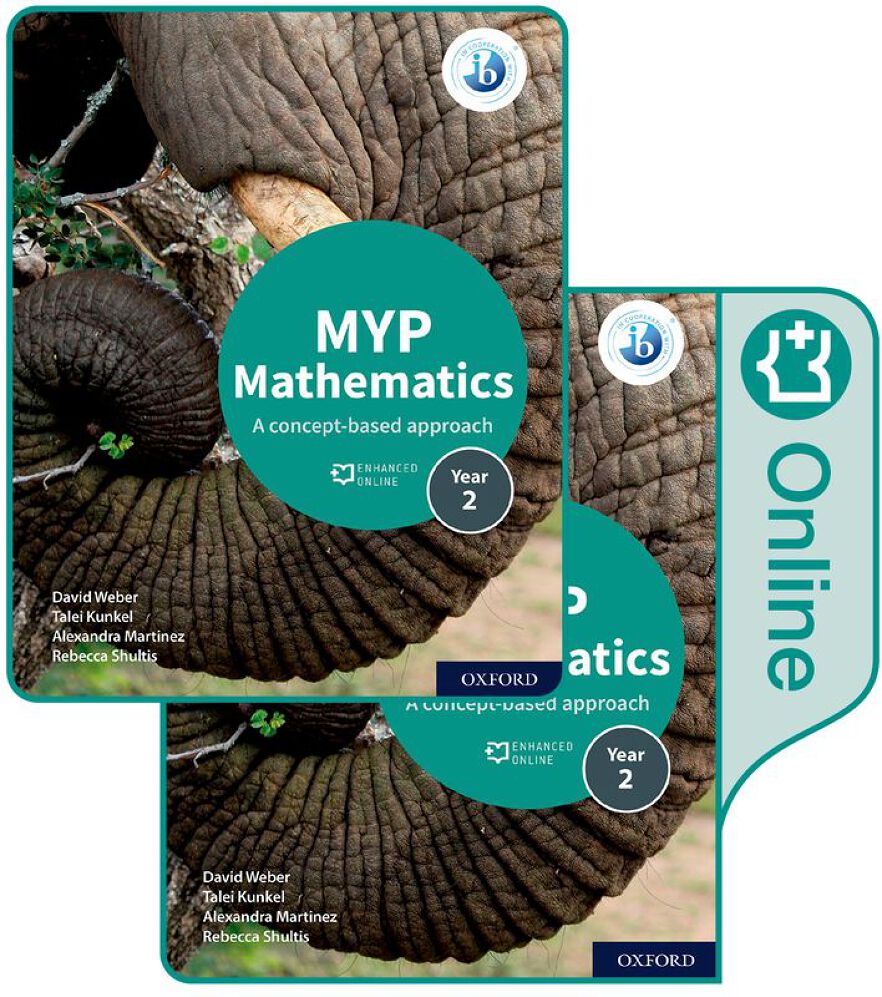MYP Mathematics 2: Print and Online Course Book Pack

MYP Mathematics 2: Print and Online Course Book Pack
|
ISBN: |
9780198356264 |
|
Binding: |
Paperback + code (digital) |
|
Published: |
7 Jun 2018 |
|
Availability: |
0
|
|
Series: |
$97.95 AUD
$110.99 NZD
Add To CartDescription
Progress your learners into IB Diploma - fully comprehensive and matched to the MYP Next Chapter curriculum
Develop conceptual understanding in the best way for your learners - learn by mathematical unit or by key concept
Drive active, critical exploration of mathematical principles - build rounded comprehension framed within the key and related concepts
Develop meaningful cross-curricular connections that help learners recognize and manipulate mathematical ideas in other disciplines
Support higher level thinking skills through an approach grounded in factual, conceptual and debatable questions
Build a solid foundation of practical skills with extensive practice equipping learners to apply skills
Fully prepare learners for the MYP eAssessment
This pack includes one print Student Book and one online Student Book. The online Student Book will be available on Oxford Education Bookshelf until 2028. Access is facilitated via a unique code, which is sent in the mail. The code must be linked to an email address, creating a user account. Access may be transferred once to a new user, once the initial user no longer requires access. You will need to contact your local Educational Consultant to arrange this.
Contents
1.1: Simplifying ratios
1.2: Equivalent ratios
1.3: Other ways to represent ratios
1.4: Solving proportions
1.5: Proportional reasoning
Unit 2 Probability: Games and play
2.1: Events and outcomes
2.2: Representing the sample space
2.3: Defining and representing probability
2.4: Calculating probability
2.5: Complementary events
2.6: Theoretical versus experimental probability
2.7: Simulations
Unit 3 Integers: Human explorations
3.1: What is an integer?
3.2: Absolute value
3.3: The coordinate grid
3.4: Multiplication and division
3.5: Addition and subtraction
3.6: Multiple operations
Unit 4 Algebra: Puzzles and tricks
4.1: Classifying algebraic expressions
4.2: Simplifying expressions
4.3: Writing expressions
4.4: Solving equations
4.5: Writing equations
4.6: Application of equations
4.7: Representing inequalities
4.8: Solving inequalities
Unit 5 Geometry: Human and natural landscapes
5.1: Area of trapezium
5.2: Area of regular polygons
5.3: Circumference and area of circles
5.4: Surface area of regular prisms
5.5: Volume of rectangular prisms
5.6: Volume of other prisms
Unit 6 Rates: Interconnectedness of human-made systems
6.1: What is a rate?
6.2: Converting measurements
6.3: Converting currencies
6.4: Unit rates and unit prices
6.5: Problem solving with rates
6.6: Rate of change
Unit 7 Univariate data: Accessing equal opportunities
7.1: Stem-and-leaf plots
7.2: Measures of central tendency (mean, median, mode)
7.3: The effect of outliers
7.4: Measures of dispersion (range and quartiles)
7.5: Box and whisker plots
Authors
Author David Weber
Author Talei Kunkel
Author Alexandra Martinez
Author Rebecca Shultis